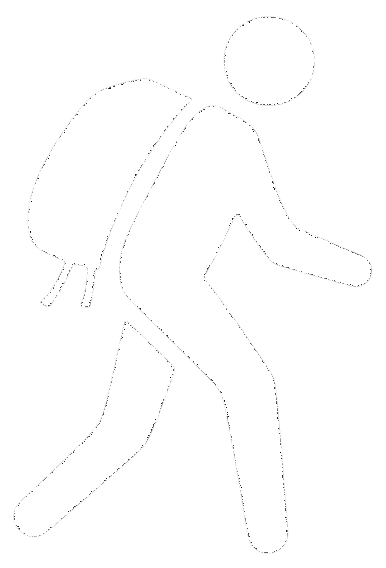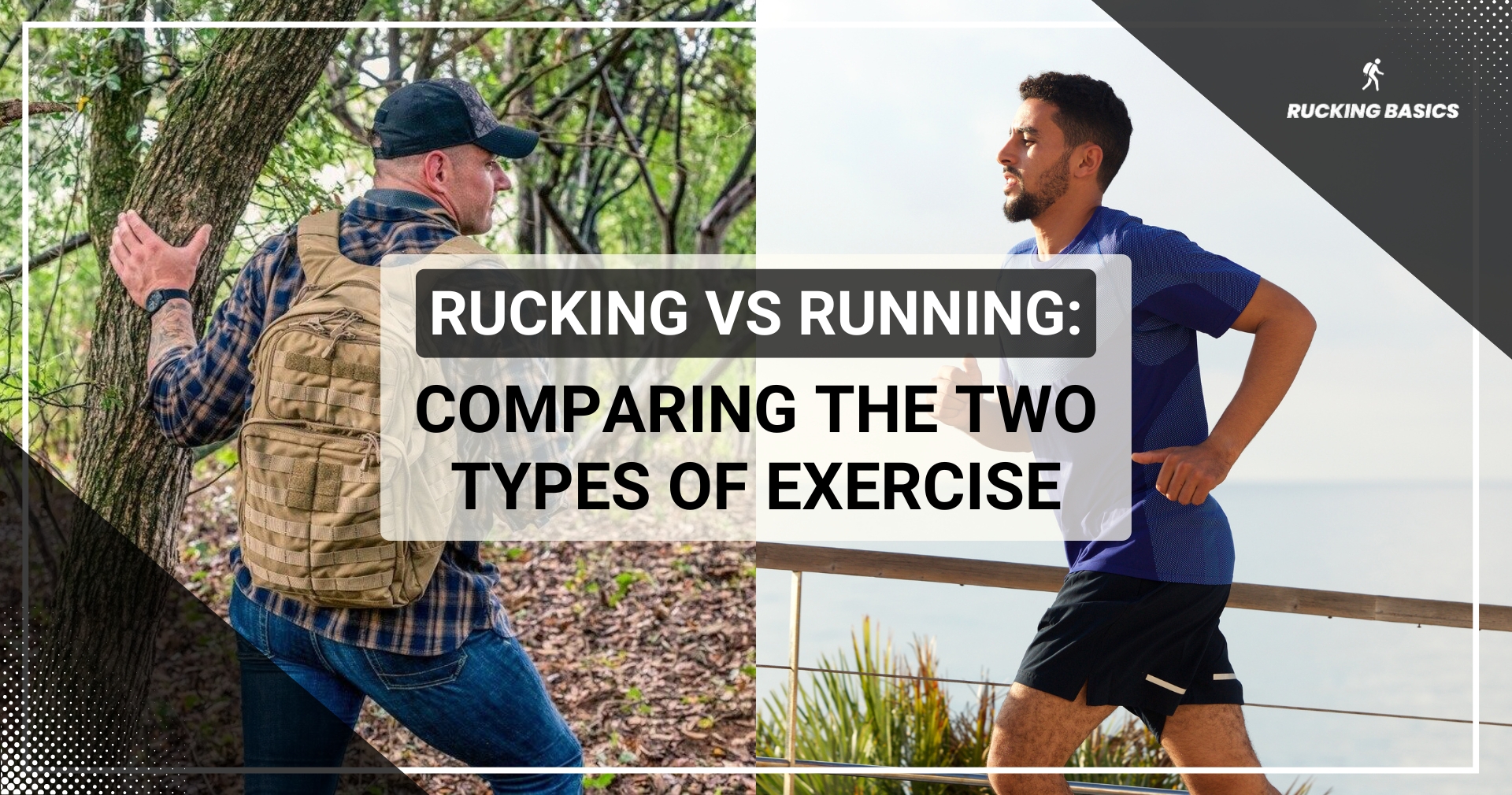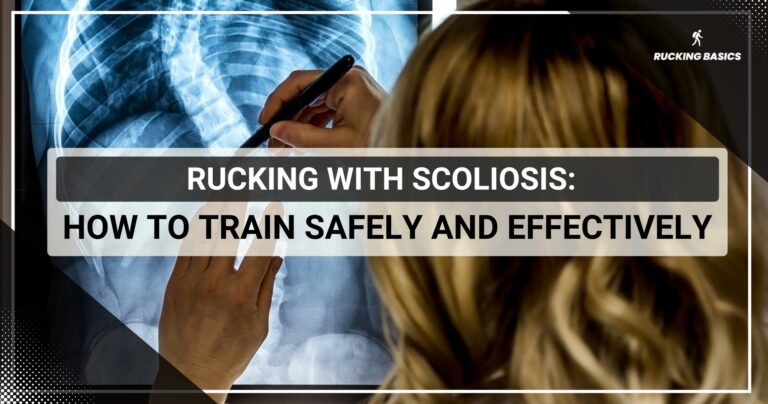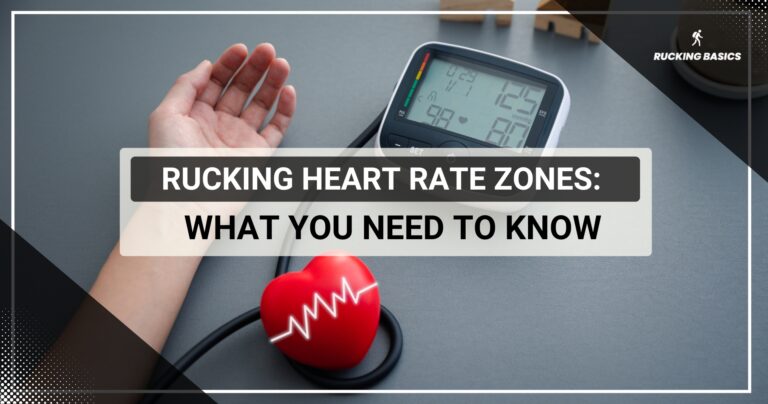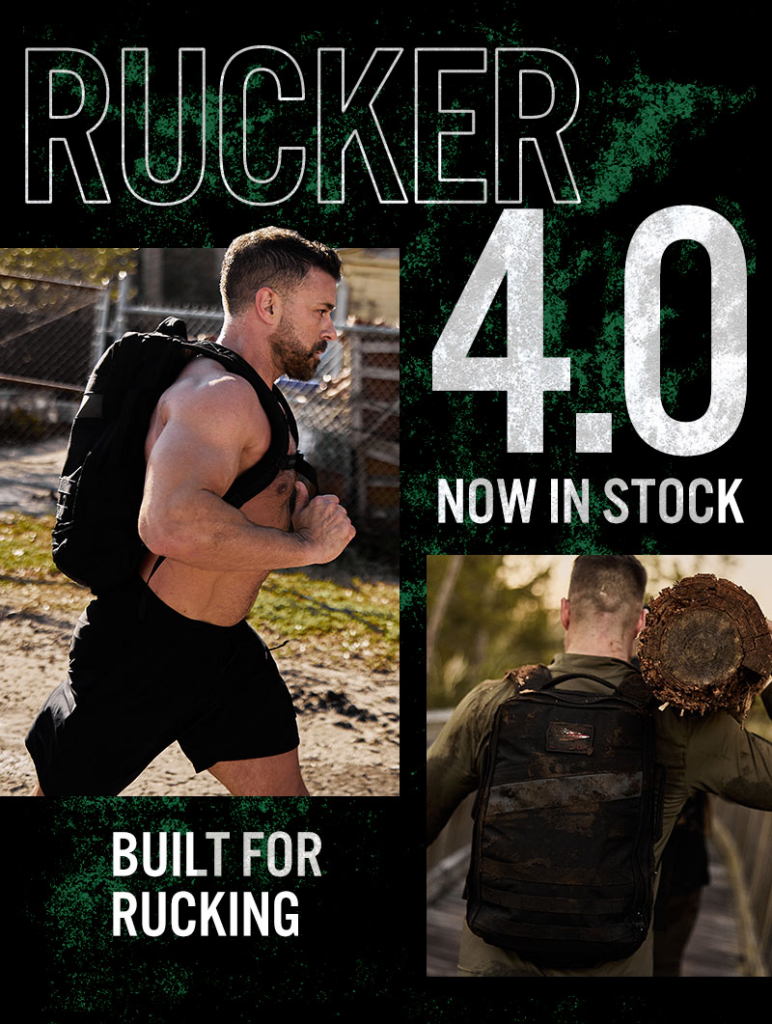Running is amazing. It is one of the best cardiovascular exercises, and it has many other health benefits.
But running benefits come with a price for many. Most people are not physically fit to run regularly without injuries and pain because their sedentary lifestyle atrophies their bodies, making them incapable of withstanding that sudden peak of activity.
I’m not saying that you shouldn’t run; on the contrary, I run regularly. However, if you’re looking for a somewhat similar outdoor activity that carries a lower risk of injury, rucking may be what you need.
Since both activities offer unique benefits and challenges, that sparks the ongoing debate: which is better? Let me help you make the best possible decision.
What is Rucking?
Rucking workout is part of military training and has emerged in recent years as a popular and accessible form of exercise for people of all backgrounds. It involves walking with a weighted backpack. Although this activity draws inspiration from the military’s tradition of marching with heavy gear, it has evolved far beyond its origins.
Beyond the physical and mental benefits, which I will talk more about later, I like rucking so much because it’s also incredibly practical. You can ruck through city streets, hiking trails, or urban parks, just carrying your rucksack. You also need just a few more basic pieces of equipment, such as rucking shoes, premium socks, and comfy, moisture-wicking clothes.
Benefits of Rucking
Let’s briefly discuss rucking benefits:
- Physical Benefits — Rucking is a unique blend of cardiovascular exercise and strength training. It also comes without the high-impact stress often associated with other forms of exercise. As you walk with a weighted pack, your legs, core, and back work harder to support the added load. This leads to increased muscle strength, endurance, and tone over time. Additionally, rucking boosts cardiovascular health, enhances overall fitness levels, and improves bone density.
- Mental Benefits – I always tell my clients and friends how significant the mental benefits of rucking are, not just physical. The mental toughness required to push through discomfort, fatigue, and challenging terrain during a ruck translates to increased resilience and endurance in all aspects of life. It will help you build confidence, discipline, and mental fortitude.
What is Running?
We can’t call running a sport because it is an activity deeply entrenched in human history. It has transcended epochs and cultures, evolving from a necessity for survival to a form of exercise and sport worldwide.
The origins of running trace back to our earliest ancestors, who relied on running as a means of hunting and gathering. They were way faster and more durable than we are today because they had to pursue prey across vast landscapes.
Running became a competitive endeavor in ancient civilizations, featuring prominently in events such as the ancient Olympic Games in Greece.
The Industrial Revolution changed how people lived and moved, with urbanization and modernization altering the landscape. What was once a natural and essential activity became leisure and sport as cities expanded and lifestyles became sedentary.
Running experienced a resurgence in popularity during the 20th century, fueled by advances in sports science, the rise of organized athletics, and a growing emphasis on health and fitness. Today, we have running clubs, races, and marathons for individuals of all backgrounds to participate and compete. Of course, different forms of running are still part of the Olympic Games today.
Benefits of Running
Running shares many of the benefits with rucking:
- Physical Benefits – Running is a full-body workout that engages multiple muscle groups simultaneously. Once your heart rate increases, it boosts cardiovascular endurance and strengthens your heart and lungs. This sustained aerobic activity improves your body’s ability to utilize oxygen efficiently and burns a significant number of calories, making it an effective tool for weight loss. Furthermore, the repetitive impact of running enhances bone density, reducing the risk of osteoporosis and other skeletal disorders. With consistent training, runners notice improvements in muscular strength and can even build muscle mass.
- Mental Benefits – One of the most remarkable aspects of running is its impact on mental well-being. The release of endorphins called “runner’s high,” contributes to feelings of euphoria, happiness, and overall well-being. These natural mood-boosting chemicals help alleviate stress, anxiety, and depression. Also, it helps you improve your mental strength. Remember the last time you ran? After a while, it got tough, but you did your best to push through.
Rucking vs Running: The Main Question
And now, the main part: rucking vs. running. The comparison between rucking and running must include their impact on the body, practicality, and individual preferences. Although they are beneficial in a somewhat similar way, they differ in intensity and many other factors.
Factors to Consider
Rucking and running vary significantly in their impact on the body, particularly regarding joint stress and injury risk. Rucking is a gentler type of daily workouts, so it’s undoubtedly better for those who struggle with joint issues, arthritis, or recovering from injuries. For the same reason, ruck training will cause less adaptation. That is, you will strengthen less compared to someone who runs regularly, but you are much safer, and that is much more important for amateurs.
Both activities do not require much equipment, but basic running equipment consists practically only of a pair of running shoes. Of course, you can buy so many things, including state-of-the-art tools, but in essence, sneakers are enough. Rucking still requires a bit more – a backpack or training weight vest, ruck plate, and a few more rucking accessories. Also, running usually requires less time because the duration is shorter, and it is more suitable for an urban environment, so you don’t have to go far from home. You can surely practice rucking in the city, but I prefer nature.
The social aspects of rucking and running also differ. Rucking is more of a social activity. Whether a group ruck march or a charity event, rucking offers shared experiences and teamwork opportunities. In contrast, running provides a more solitary experience, which is sometimes good to clear your mind, but occasionally you will miss companionship.
Similarities between Rucking and Running
I already told you that rucking and running share many benefits. As we continue to explore their similarities, it becomes even more evident that despite their distinct characteristics, these two activities share common ground in various aspects.
Both are excellent forms of cardiovascular exercise. They can help you increase your aerobic capacity significantly, whether through brisk walking with a weighted backpack or jogging at a steady pace. You can also increase your anaerobic capacity with the right approach.
Next is the calorie-burning potential. We live in an age where obesity has become so common that we don’t pay attention to it. But the price we all pay, both financial and health, is staggering. (1) Rucking and running help to combat this problem.
The above-mentioned “runner’s high” is also common because the “feel-good” hormones are present while walking on nature trails or running on the track at the local school.
And yes, both are easily accessible and versatile. You don’t have to spend a fortune to start rucking and running, nor do you need specialized fields, courts, coaches, and so on.
Differences between Rucking and Running
Apart from the impact on joints, the necessary equipment, and the social aspect, which I have already mentioned multiple times, so no need to return to it, there are also other differences.
For example, rucking revolves around a weight-bearing component, while running, on the other hand, typically does not involve added weight. An option to run with a weighted vest or ankle weights is popular among MMA fighters and some other type of athletes, but there is not much scientific evidence about the benefits of this type of running vs body weight running.
That being said, if you’re curious about if rucking improves your running abilities, it certainly can. Rucking strengthens your muscles and cardiovascular system in ways that complement running, often improving stamina and endurance over time.
Although both can be adapted to individual needs, running offers more training variability, with options to adjust pace, distance, terrain, and more. So, you can do everything, from leisurely jogs to high-intensity interval training (HIIT) sessions. Rucking is not that variable, though.
Once you understand all the similarities and differences, you will know which activity is better for you and when to opt for which one.
Cons of Rucking and Running
Nothing is perfect, right? So, we must talk about cons of this to activity as well.
Rucking Cons
- Slower Pace – For those accustomed to the dynamic intensity and rapid running movement, the slower pace of rucking may feel less exhilarating and challenging. I tell you this from personal experience. When I first started rucking, after years of tennis, running, and basketball, I felt like it was too slow and drawn out. If you want to increase calorie burn and anaerobic potential, running is definitely better, but be patient with rucking. Give it a chance it deserves.
- Initial Discomfort – This is true for practically any new activity. The body needs some time to get used to it, even if you are fit. However, the first rucking caused me worse DOMS than some other activities, so be prepared for initial discomfort and soreness. The added strain from bearing the extra weight of a backpack will surely lead to soreness and fatigue.
Running Cons
- High Impact on Joints – Running, especially on hard surfaces, is not gentle on your knees, ankles, and hips. Over time, the cumulative stress from running can contribute to wear and tear on joints. Therefore, if you want to run, find a field or trail with a soft surface. Take tennis for example – people can play tennis on clay in their 60s and that is not often the case on hard courts.
- Overuse Injuries – Directly related to the previous con, running is the most common cause of shin splints, stress fractures, and tendonitis. Pay attention to running technique, footwear, and volume plus intensity to reduce risk.
Wrapping Up
The difference between running and rucking is roughly the same as between rucking and backpacking. Although all three activities are usually outdoor and can be combined, there’s no definitive answer as to which is better.
I always advocate engaging in as many activities as possible, so you can play tennis on Tuesday evenings, run on Thursdays, and go to the ruck with friends on Sundays.
Suppose you still want to fully dedicate yourself to only one activity to achieve high performance. In that case, you must decide which one to choose based on your preferences, abilities, and lifestyle to create suitable training plans.
Frequently Asked Questions
How does rucking compare to trail running?
Rucking and trail running both offer experiences in nature, but they differ in pace and intensity, similar to the difference between rucking and regular running. Trail running emphasizes speed and agility on varying terrain. Rucking focuses on endurance and strength while carrying a weighted backpack. Rucking provides a challenging full-body workout with less impact on the joints than the dynamic movements involved in trail running.
Can I incorporate rucking into my marathon training regimen?
It’s not every marathoner’s choice, but yes, you can incorporate rucking into your marathon training regime. That way, you will reap cross-training benefits. Rucking provides an alternative to running, allowing you to build endurance and strength without overstressing your muscles and joints. Adding rucking sessions to your training schedule can enhance cardiovascular fitness, improve muscular endurance, and reduce the risk of overuse injuries associated with repetitive running, especially long distances such as a marathon. However, do not expect rucking alone to be sufficient preparation for the marathon, even if you ruck fast.
What are the best practices for transitioning from running to rucking?
Most people will tell you to start by learning proper form, but I will say that the most important thing is to change your mindset. Running is so different from rucking in terms of intensity, and you must adjust your mind to a new activity. After that, start with shorter ruck marches and later increase the duration, weight you carry, and intensity. Pay attention to your posture, foot placement, and stride length to maximize efficiency and minimize the risk of injury.
How does rucking affect stride length and cadence compared to running?
Rucking demands a shorter stride length and lower cadence compared to running. When rucking, people take slower, deliberate steps to maintain balance and stability while carrying a weighted backpack. This pacing allows for a more controlled and efficient movement pattern, which helps conserve energy over long distances but is slower. In contrast, longer stride length and higher cadence to generate forward momentum and maintain speed are essential for running.
Can rucking help with recovery from running-related injuries?
I like to use rucking with my clients as a tool for recovery from running-related injuries. Rucking provides full-body strengthening without subjecting muscles, tendons, and ligaments to the repetitive stress of running. Keep in mind that rucking is still a demanding activity and is not good for the early stages of recovery but for the final stage before returning to running.
References
- Cawley J, Biener A, Meyerhoefer C, Ding Y, Zvenyach T, Smolarz BG, Ramasamy A. Direct medical costs of obesity in the United States and the most populous states. J Manag Care Spec Pharm. 2021 Mar;27(3):354-366. doi: 10.18553/jmcp.2021.20410. Epub 2021 Jan 20. PMID: 33470881; PMCID: PMC10394178.
